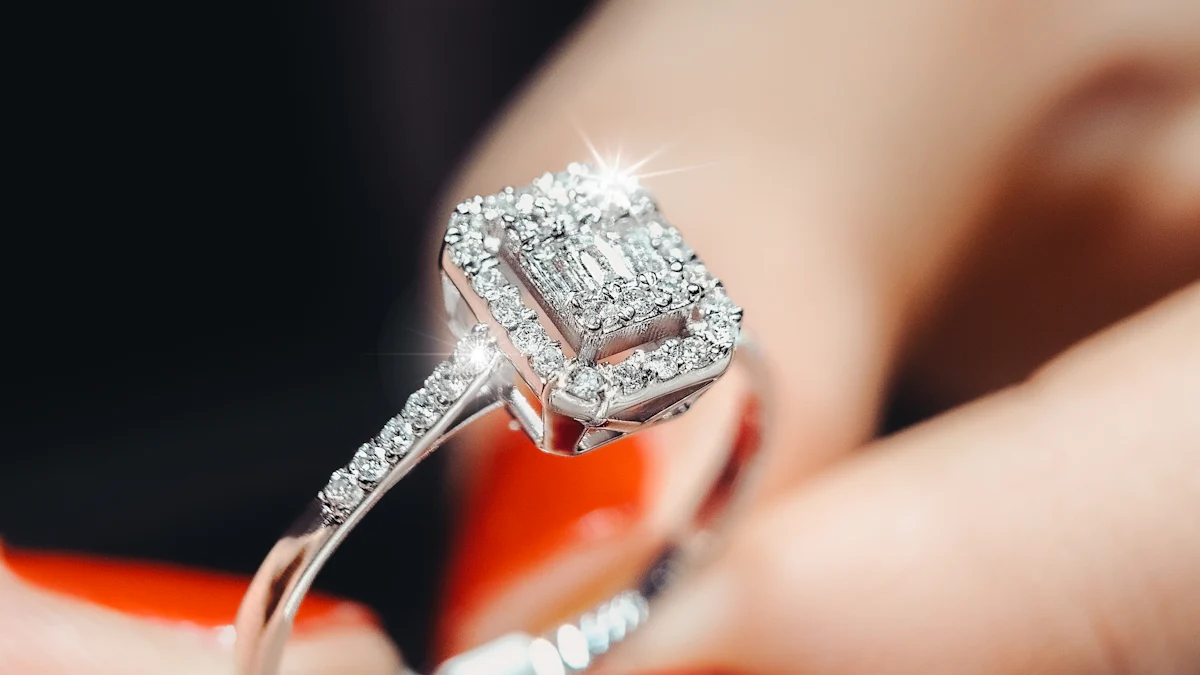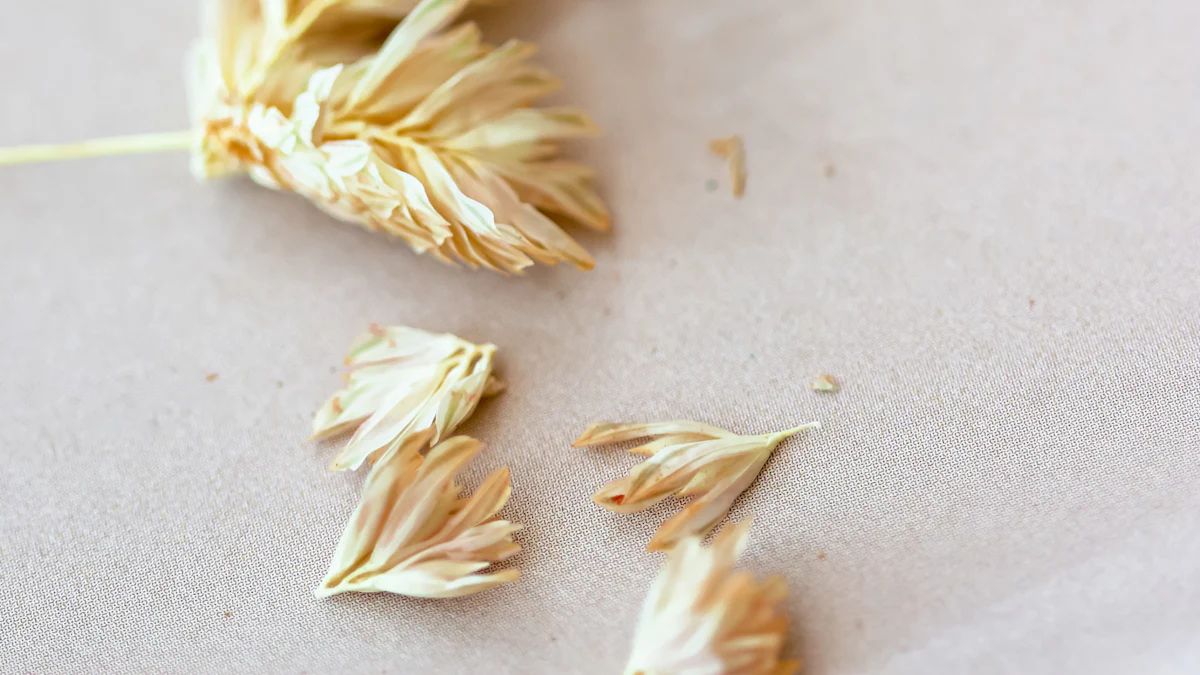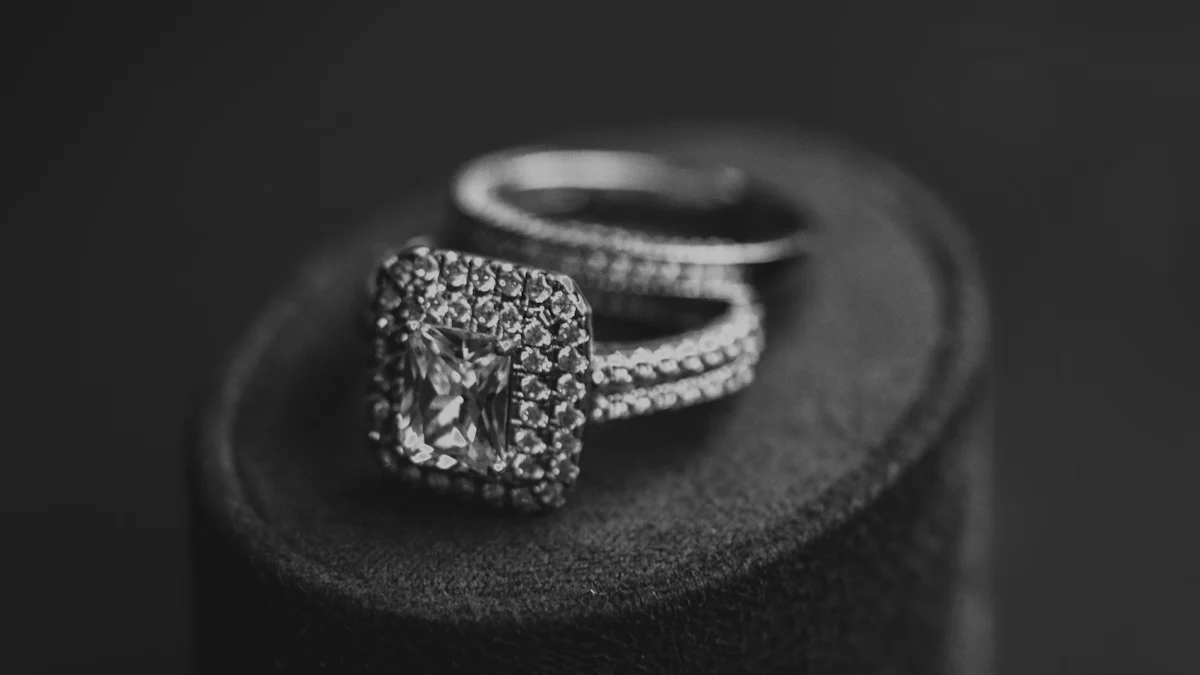How Big Is a 1 Carat Diamond? Explained

When you hear "1 carat diamond," it refers to the diamond's weight, not its physical size. A 1 carat diamond weighs 200 milligrams, but its size depends on factors like shape and cut. For instance, a round brilliant diamond of this weight typically measures about 6.4 to 6.5 millimeters in diameter. However, variations exist. Some may range from 6.2 mm to 6.8 mm, depending on proportions. The cut quality also plays a role, as a well-cut diamond can appear larger due to its brilliance and light reflection. Understanding these details helps you better assess how big is a 1 carat diamond.
Key Takeaways
- A 1 carat diamond weighs 200 milligrams, but its size varies based on shape and cut, not just weight.
- Round brilliant diamonds typically measure about 6.4 to 6.5 millimeters in diameter, while other shapes like oval or marquise can appear larger. Cut quality is crucial; a well-cut diamond reflects light better, enhancing its brilliance and perceived size.
- Consider the diamond's proportions and dimensions alongside carat weight to understand its actual appearance.
- Elongated shapes like oval and marquise can create the illusion of a larger size, making them popular choices.
- Prioritize diamonds with high cut grades (Excellent or Ideal) to maximize sparkle and visual impact. When selecting a diamond, balance your personal style with the factors of cut, shape, and dimensions for the best choice.
What Does 1 Carat Mean?
When you hear the term "1 carat," it refers to the weight of a diamond, not its physical size. A carat is a standardized unit of measurement used in the diamond industry. Specifically, 1 carat equals 200 milligrams or 0.2 grams. This weight measurement helps jewelers and buyers understand the value and rarity of a diamond. However, weight alone does not determine how big a diamond looks. The shape, cut, and proportions of the stone also play a significant role in its appearance.
Understanding Carat Weight
Carat weight is often misunderstood as a direct indicator of size. While it provides a measure of how much a diamond weighs, it does not account for the stone's dimensions. For example, two diamonds with the same carat weight can look different in size due to their shapes or cuts. A round diamond weighing 1 carat typically measures about 6.4 to 6.5 millimeters in diameter. On the other hand, an oval or marquise diamond of the same weight may appear larger because of its elongated shape.
Gemologists emphasize, "Carat weight gives you the weight of a gemstone and is commonly used as an indicator of size." However, they also note that carat weight is not the sole factor in determining a diamond's visual size.
How Carat Weight Relates to Size
The relationship between carat weight and size is not always straightforward. A diamond's size depends on its length, width, and depth. For instance, a shallow-cut diamond may spread its weight across a larger surface area, making it appear bigger. Conversely, a deep-cut diamond may concentrate its weight in its depth, resulting in a smaller face-up appearance.
According to gemstone experts, "Size is based on more factors than simply weight and includes measurements of length and width as well." This means that while carat weight provides a starting point, you must also consider the diamond's proportions to understand its actual size.
When choosing a diamond, remember that carat weight is just one piece of the puzzle. To truly assess how big is a 1 carat diamond, you need to evaluate its cut, shape, and dimensions. These factors work together to influence the diamond's overall appearance and brilliance.
How Big Is a 1 Carat Diamond Across Shapes and Cuts?

The Impact of Shape on Size
The shape of a diamond significantly affects how big it looks. While carat weight remains constant, the surface area and dimensions of different shapes create varying visual impressions. For example, a 1 carat round brilliant diamond typically measures about 6.5 millimeters in diameter. This shape is known for its balanced proportions, which make it appear symmetrical and classic.
Other shapes, however, can look larger or smaller despite having the same carat weight. An oval diamond, with its elongated design, often appears bigger than a round diamond of the same weight. Similarly, a marquise diamond, with its pointed ends, maximizes its surface area, giving it a larger face-up appearance. On the other hand, a radiant-cut diamond measuring approximately 6.0 by 4.0 millimeters may seem smaller due to its rectangular shape and deeper cut.
Tip: If you want a diamond that looks larger, consider elongated shapes like oval, pear, or marquise. These shapes spread the carat weight across a greater surface area, enhancing their size visually.
Understanding how shape influences size helps you choose a diamond that aligns with your preferences. By comparing shapes, you can determine which one offers the best balance between size and style.
The Role of Cut in Perceived Size
The cut of a diamond plays a crucial role in how big it looks. A well-cut diamond reflects light efficiently, creating brilliance and sparkle that enhance its visual size. For instance, a round brilliant diamond with an excellent cut grade will appear larger than a poorly cut diamond of the same carat weight. This is because the light performance draws attention to the diamond's surface, making it seem more prominent.
Cut also affects the diamond's proportions, which influence its face-up size. A shallow-cut diamond may spread its weight across a wider surface, making it look bigger. However, this can compromise its brilliance. Conversely, a deep-cut diamond may concentrate its weight in its depth, resulting in a smaller face-up appearance but potentially better light performance.
Expert Insight: "A diamond's cut quality directly impacts its perceived size and brilliance. Prioritize cut grade when selecting a diamond to ensure it looks its best."
When evaluating how big is a 1 carat diamond, always consider the cut quality. A well-cut diamond not only enhances its beauty but also ensures that it appears as large as possible for its carat weight.
Factors That Influence the Appearance of a 1 Carat Diamond

Proportions and Dimensions
The proportions and dimensions of a diamond significantly impact how it looks. These measurements determine the balance between the diamond's length, width, and depth. A well-proportioned diamond reflects light more effectively, enhancing its brilliance and making it appear larger. For example, a diamond with ideal proportions will have a balanced spread, ensuring that its weight is distributed evenly across its surface.
Diamonds with shallow cuts may look bigger because they spread their weight across a larger surface area. However, this can reduce their brilliance since light escapes through the bottom instead of reflecting back to your eyes. On the other hand, deep-cut diamonds concentrate their weight in their depth, which can make them appear smaller from the top view. Despite this, they may exhibit better light performance if cut correctly.
Expert Insight: "Ideal or excellent proportions reflect light better, resulting in a more visually appealing gemstone." This means that proportions directly influence not only the size perception but also the overall beauty of the diamond.
When evaluating how big is a 1 carat diamond, you should pay close attention to its dimensions. Measurements like diameter for round diamonds or length-to-width ratio for fancy shapes help you understand how the diamond will look when worn. Always consider these factors alongside carat weight to ensure you choose a diamond that meets your expectations.
Light Performance and Sparkle
Light performance plays a crucial role in how a diamond appears to the naked eye. A diamond's ability to reflect and refract light creates its brilliance, fire, and sparkle. These qualities can make a diamond seem larger and more vibrant. Cut quality directly affects light performance. A well-cut diamond maximizes light reflection, enhancing its visual size and appeal.
Brilliance refers to the white light reflected from the diamond's surface, while fire describes the dispersion of light into rainbow colors. Sparkle, or scintillation, occurs when the diamond moves and light dances across its facets. Diamonds with excellent light performance often appear more striking and captivating, regardless of their carat weight.
Scientific Research Findings: Studies highlight that "diamond proportions heavily influence a diamond's brilliance, fire, and overall presence." This underscores the importance of choosing a diamond with precise proportions and excellent cut quality.
To maximize sparkle, prioritize diamonds with high cut grades, such as "Excellent" or "Ideal." These diamonds reflect light more effectively, creating a dazzling appearance. Even if two diamonds share the same carat weight, the one with superior light performance will often look larger and more impressive.
By understanding the relationship between proportions, dimensions, and light performance, you can make an informed decision when selecting a diamond. These factors work together to influence how big is a 1 carat diamond and how stunning it appears in real life.
Tips for Choosing the Best 1 Carat Diamond
Selecting the perfect 1 carat diamond requires careful consideration of several factors. By focusing on key aspects like cut quality, shape preferences, and dimensions, you can ensure your choice aligns with your expectations and budget.
Focus on Cut Quality
The cut quality of a diamond significantly impacts its brilliance and perceived size. A well-cut diamond reflects light efficiently, creating exceptional sparkle and enhancing its visual appeal. For example, a round brilliant diamond with an excellent cut grade maximizes light reflection due to its 57 to 58 facets. This makes it appear larger and more vibrant than a poorly cut diamond of the same carat weight.
Expert Tip: "Prioritize cut quality over carat weight when choosing a diamond. A smaller, well-cut diamond often looks more stunning than a larger, poorly cut one."
When assessing cut quality, pay attention to proportions, symmetry, and polish. These elements work together to optimize light performance. Diamonds with ideal proportions, such as a balanced table size and pavilion angle, deliver superior brilliance. Always choose a diamond with a cut grade of "Excellent" or "Ideal" to ensure it looks its best.
Consider Shape and Style Preferences
The shape of a diamond plays a crucial role in how big it appears. While the round brilliant is the most popular shape due to its unmatched brilliance and symmetry, other shapes may suit your style and offer unique advantages. For instance:
- Oval diamonds: Their elongated shape creates the illusion of a larger size.
- Marquise diamonds: With pointed ends, they maximize surface area and appear bigger.
- Cushion diamonds: Their softly squared edges enhance sparkle and make the diamond seem more substantial.
Pro Tip: "If you want a diamond that looks larger, consider elongated shapes like oval or marquise. These shapes distribute carat weight across a greater surface area."
Your personal style should guide your choice. Whether you prefer the classic elegance of a round diamond or the distinctive charm of a cushion cut, selecting a shape that resonates with you ensures long-term satisfaction.
Evaluate Dimensions Alongside Weight
Carat weight alone does not determine how big a diamond looks. The dimensions, including length, width, and depth, play a significant role in its appearance. For example, a shallow-cut diamond may spread its weight across a larger surface area, making it look bigger. However, this can compromise brilliance. Conversely, a deep-cut diamond may appear smaller but could exhibit better light performance.
Did You Know? Diamonds just under 1 carat, such as 0.97ct or 0.99ct, often look nearly identical to a full 1 carat diamond but cost significantly less. This can be a smart way to maximize value without sacrificing size.
When evaluating dimensions, consider measurements like diameter for round diamonds or length-to-width ratio for fancy shapes. These details help you understand how the diamond will look when worn. Always balance carat weight with dimensions to ensure the diamond meets your expectations for both size and brilliance.
By focusing on these factors, you can confidently choose a 1 carat diamond that offers the perfect combination of beauty, size, and value.
A 1 carat diamond’s size depends on its shape, cut, and proportions rather than just its weight. Round diamonds, for example, typically measure around 6.4 to 6.5 millimeters, but other shapes like oval or marquise can appear larger due to their elongated designs. Prioritizing cut quality ensures maximum brilliance and sparkle, which enhances the diamond’s perceived size. When selecting a diamond, focus on dimensions and choose a shape that complements your style. Understanding these factors helps you make an informed decision about how big is a 1 carat diamond and ensures satisfaction with your choice.
FAQ
How big is a 1-carat diamond?
A 1-carat diamond is a popular choice for many buyers, especially for engagement rings. It weighs 200 milligrams and typically measures about 6.4 to 6.5 millimeters in diameter for a round cut. However, the actual size can vary depending on the diamond's shape and cut. This size strikes a balance between making a statement and being practical for everyday wear.
What shapes can I choose for a 1-carat diamond?
You can select from a variety of shapes for a 1-carat diamond. Popular options include:
- Round: Known for its brilliance and classic appeal.
- Princess: A square shape with sharp edges.
- Oval: Elongated and elegant, often appearing larger.
- Marquise: Pointed ends that maximize surface area.
- Cushion: Softly squared edges with a vintage feel.
- Emerald: Rectangular with step cuts for a sophisticated look.
- Pear: A teardrop shape that combines round and marquise features.
Each shape offers a unique style and visual impact, so choose one that aligns with your preferences.
Is 1 carat a good size diamond for an engagement ring?
Yes, a 1-carat diamond is an excellent choice for an engagement ring. It is the most popular size because it balances affordability and visual impact. A 1-carat diamond is large enough to stand out while remaining versatile and suitable for daily wear. The ideal size ultimately depends on your personal style and what feels right for you.
How much is a 1-carat diamond ring?
The price of a 1-carat diamond ring varies widely based on factors like cut, color, clarity, and shape. On average, you can expect to pay anywhere from $1,000 to $30,000. For example, a diamond with excellent cut quality and high clarity will cost more than one with lower grades. Setting and design also influence the final price.
Tip: To get the best value, focus on cut quality and consider diamonds just under 1 carat, such as 0.97 or 0.99 carats. These often look nearly identical to a full 1 carat but cost less.
Why do some 1-carat diamonds look bigger than others?
The appearance of a 1-carat diamond depends on its shape, cut, and proportions. For instance, elongated shapes like oval, marquise, or pear distribute weight across a larger surface area, making them look bigger. A shallow-cut diamond may also appear larger because it spreads weight across its top, but this can reduce brilliance. Always evaluate dimensions alongside carat weight to ensure the diamond meets your expectations.
What is the most brilliant cut for a 1-carat diamond?
The round brilliant cut is the most brilliant option for a 1-carat diamond. Its 57 to 58 facets are designed to maximize light reflection, creating exceptional sparkle. If brilliance is your priority, choose a round diamond with an excellent or ideal cut grade. Other shapes, like cushion or princess cuts, also offer good brilliance but may not match the round cut's light performance.
Can I customize a 1-carat diamond ring?
Yes, you can customize a 1-carat diamond ring to suit your preferences. Jewelers often allow you to choose the diamond's shape, setting style, and metal type. Popular settings include solitaire, halo, and three-stone designs. Customization ensures your ring reflects your personal style and creates a unique piece.
How do I know if a 1-carat diamond is high quality?
To assess the quality of a 1-carat diamond, focus on the 4 Cs: cut, color, clarity, and carat weight.
Are there alternatives to a 1-carat diamond?
If a 1-carat diamond doesn't fit your budget or preferences, consider alternatives like:
- Lab-grown diamonds: These offer the same physical and chemical properties as natural diamonds but at a lower cost.
- Moissanite: A gemstone with brilliance similar to diamonds, often more affordable.
- Smaller diamonds: Diamonds just under 1 carat, such as 0.9 or 0.95 carats, can look nearly identical to a full 1 carat but cost less.
These options provide flexibility while maintaining beauty and quality.
What should I prioritize when buying a 1-carat diamond?
When purchasing a 1-carat diamond, prioritize the following:
- Cut quality: Ensures maximum brilliance and sparkle.
- Shape: Reflects your personal style and enhances the diamond's appearance.
- Dimensions: Evaluate length, width, and depth to understand how the diamond will look.
- Certification: Verify the diamond's quality with a grading report from a trusted gemological institute.
By focusing on these factors, you can confidently select a diamond that meets your expectations and budget.
See Also
Exploring the Size of a 2.25 Carat Diamond
Cost Analysis of a 2 Carat Lab Grown Diamond
Pricing Insights for a 3 Carat Lab Grown Diamond

